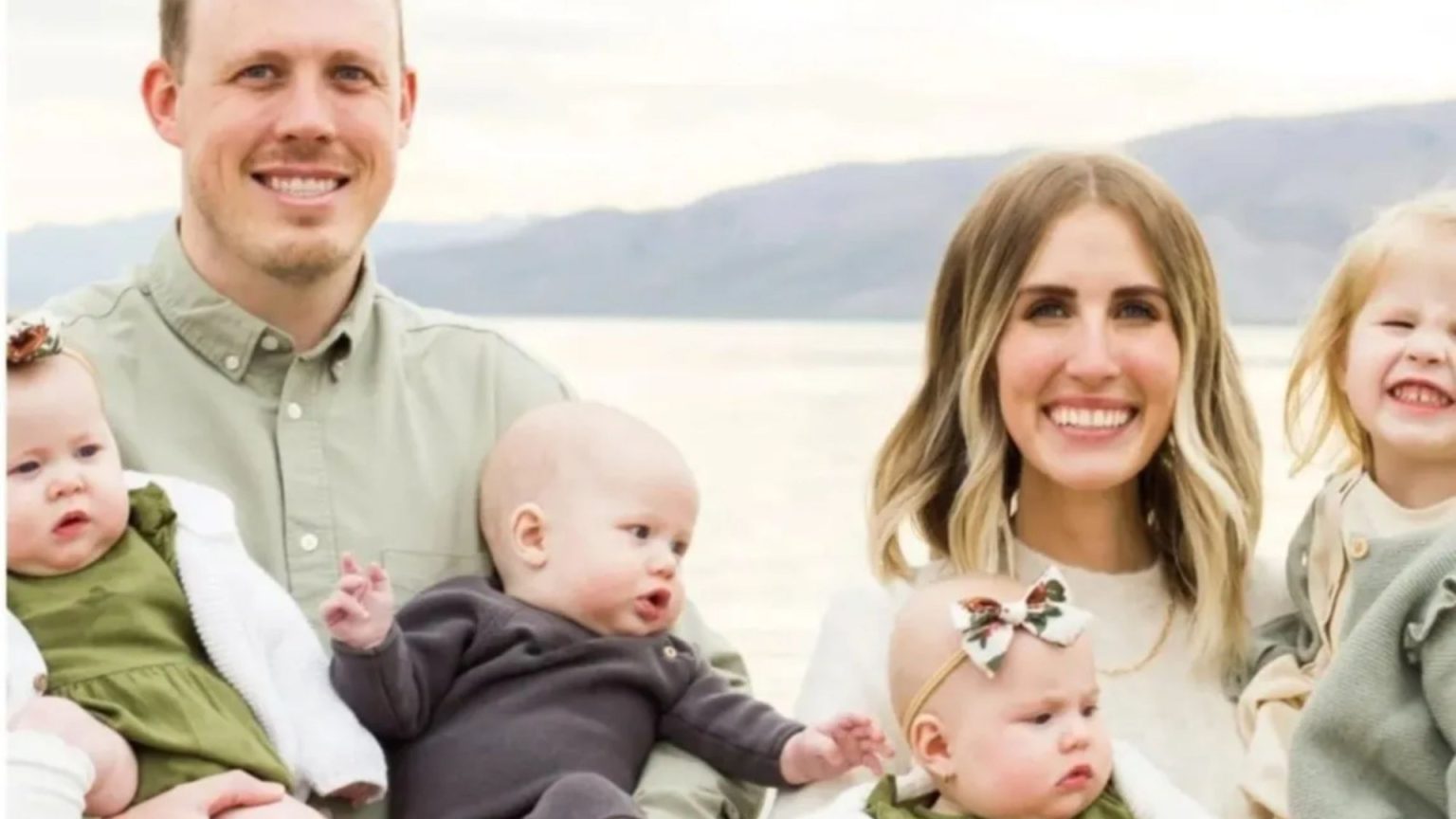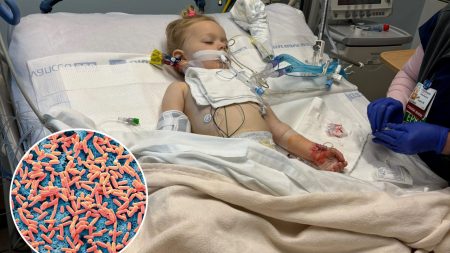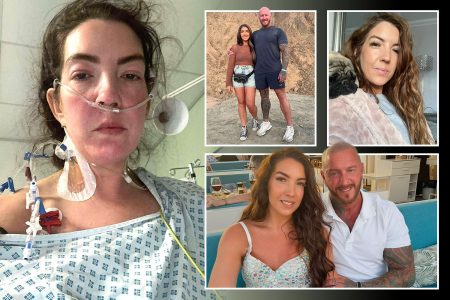Shelby Stewart and her husband, Chase, residing in Utah, embarked on a challenging yet ultimately miraculous journey to expand their family. Having already faced the daunting prospect of infertility due to Shelby’s teenage battle with Non-Hodgkin Lymphoma, a type of blood cancer, which threatened early menopause, they successfully conceived their first daughter, Bennett, through artificial insemination. Yearning for a sibling for Bennett, they resumed fertility treatments, encountering repeated setbacks with artificial insemination. Undeterred, they turned to In Vitro Fertilization (IVF), a process involving stimulating the ovaries to produce multiple eggs, retrieving them, fertilizing them with sperm in a laboratory, and then transferring the resulting embryos into the uterus.
Following a challenging IVF cycle, Shelby received the joyous news of a positive pregnancy test. However, subsequent blood work hinted at something extraordinary. An ultrasound revealed not one, not two, but three gestational sacs. Initially, doctors speculated that one of the transferred embryos had split, a phenomenon that can occur with twins. However, the truth unveiled itself after the birth of the triplets – two girls, Etta and Margot, and a boy, Garner, at 35 weeks gestation. Genetic testing confirmed that each triplet originated from a distinct embryo. Astonishingly, Shelby had conceived naturally, unknowingly, at the same time she underwent the IVF procedure, resulting in the simultaneous development of three separate embryos: one conceived naturally and two from the IVF transfer. This exceptionally rare occurrence left the medical team astounded, as they had never witnessed such a case before.
Shelby’s postpartum period was complicated by peripartum cardiomyopathy, a condition where the heart becomes weakened and enlarged after pregnancy, likely due to the strain of carrying triplets. While her recovery was slow, Shelby’s health eventually stabilized. Now, three years later, the triplets thrive, forming an inseparable bond, and Bennett embraces her role as a doting older sister. The Stewart family’s story stands as a testament to resilience, perseverance, and the unexpected miracles that can occur amidst the challenges of infertility.
In Vitro Fertilization (IVF) has become a beacon of hope for individuals and couples struggling with infertility. This complex process involves several key stages, beginning with suppressing the natural menstrual cycle to gain control over the timing of egg development. Medications are then administered to stimulate the ovaries to produce multiple eggs, followed by close monitoring of egg development through ultrasound scans and further medication adjustments to ensure optimal maturation. Once mature, the eggs are retrieved through a minimally invasive procedure involving a needle guided through the vagina and into the ovaries. The retrieved eggs are then combined with sperm in a laboratory setting, allowing fertilization to occur. Finally, one or two of the resulting embryos are carefully transferred into the woman’s uterus, with the hope of successful implantation and pregnancy.
IVF can be performed using the couple’s own eggs and sperm or with donor gametes, providing options for various infertility scenarios. The National Institute for Health and Care Excellence (NICE) in the UK provides guidelines for IVF access within the National Health Service (NHS), generally recommending consideration for women under 43 who have been trying to conceive naturally for two years or who have undergone 12 cycles of artificial insemination. Ultimately, eligibility for NHS-funded IVF is determined by local integrated care boards, varying across regions. For those who do not meet the criteria for NHS funding, private IVF treatment is an option, albeit a costly one, ranging up to £5,000 or more. Success rates of IVF are influenced by several factors, most notably the woman’s age and the underlying cause of infertility, if known.
While IVF offers hope for parenthood, it is essential to acknowledge the associated risks and challenges. Beyond the emotional toll of the process, potential medical complications include side effects from the medications used, such as hot flashes and headaches. The chance of multiple pregnancies is increased with IVF, posing potential risks for both the mother and babies. Other risks include ectopic pregnancy, where the embryo implants outside the uterus, typically in the fallopian tubes, and ovarian hyperstimulation syndrome, a condition where the ovaries overreact to the fertility medications.
The Stewart family’s experience highlights the unpredictable nature of fertility journeys. Shelby’s unexpected natural conception alongside the successful IVF implantation underscores the remarkable capacity of the human body. Their story serves as an inspiration for those navigating the complexities of infertility, offering a message of hope and the reminder that miracles can and do happen. The triplets, now a vibrant trio, bring immeasurable joy to their family, enriching their lives in ways they could have never imagined. Shelby and Chase, reflecting on their extraordinary path to parenthood, emphasize the importance of perseverance and the unwavering belief that even amidst adversity, miracles are possible. Their story stands as a testament to the power of hope, resilience, and the unexpected blessings that can arise from the pursuit of parenthood.











